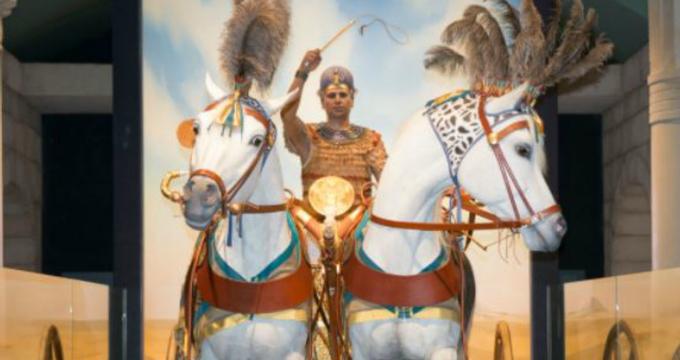The Milwaukee Public Museum (MPM) is Wisconsin’s largest natural history museum and a cultural cornerstone, home to more than 4 million objects displayed across 150,000 square feet and 3.5 floors of immersive exhibits.
Recommended For
Families with kids
Enjoy hands-on activities, planetarium shows, and immersive exhibits.
Science and history lovers
Explore everything from fossils and archaeology to world cultures and biodiversity.
Educators & students
Engage with structured K–12 and college-level educational programming.
Curious minds
Learn through lectures, workshops, and planetarium experiences for all ages.
History
Founded in 1882, the Milwaukee Public Museum has grown into a nationally respected institution operated by a nonprofit entity and supported by public and private funds. In 2011, MPM became a leader in sustainable museum practices by installing a green roof with solar panels and biotrays. This system filters rainwater, reduces heat output, and enhances environmental efficiency while saving 90,000 gallons of stormwater runoff annually.
Exhibits & Permanent Collections
MPM’s exhibits take visitors on an international and historical tour of natural and cultural life. With more than 4 million artifacts, the museum spans human history, biodiversity, and Earth sciences. Highlights include:
Ground Floor
- Hebior Mammoth: 14,500-year-old mammoth discovered nearby in Kenosha County
- Meadows in the Sky: Green roof exhibit demonstrating sustainable urban ecosystems
First Floor
- Bugs Alive! – Live insects and arthropods in interactive displays
- European Village: Step inside homes from 1875–1925 European immigrant communities
- Exploring Life on Earth: Dioramas and animatronics teach Earth’s natural history
- Puelicher Butterfly Vivarium: Walk through a two-story butterfly habitat and lab
- Rainforest: 12,000 square feet of tropical biodiversity in an immersive jungle environment
- Samson: Award-winning taxidermy of Milwaukee’s beloved zoo gorilla
- Sense of Wonder: A curiosity shop featuring treasures from all scientific fields
- Streets of Old Milwaukee: Travel back to the early 1900s in historic Milwaukee
- The Third Planet: Home to dinosaurs and prehistoric life-size models
Second Floor
- A Tribute to Survival: Native American life and history with life-size dioramas
- North America: Natural landscapes, tools, and cultures across the continent
- Wisconsin Woodlands: 75+ mounted regional species, artifacts, and archaeological finds
- Native Games: A showcase of traditional indigenous games and social practices
Third Floor
- Africa: Explore African habitats and ecosystems through four exhibit zones
- Crossroads of Civilization: Trace 4,000 years of trade, empire, and cultural fusion
- Arctic: Dioramas depict polar wildlife and native life
- Asia: Discover Asian decorative arts and walk through a Japanese home and garden
- Living Oceans: Descend into ocean habitats, including a Caribbean pier and coral reef
- Pacific Islands: Explore headhunting traditions, river art, and island cultures
- Pre-Columbian America: Mesoamerican civilizations from 2500 BC to AD 1500
- South and Middle America: Markets, jungles, and life in the Mayan Highlands
- Student Exhibit: Rotating gallery curated by UWM/MPM Museum Studies students
Educational Programs & Special Attractions
Planetarium & Dome Theater
The National Geographic Dome Theater and Daniel M. Soref Planetarium offers immersive experiences through planetarium shows, 3D films, and giant screen documentaries. The 6-story hemispheric dome is the world’s first to use Digistar 6 3D projection and features shows on astronomy, dinosaurs, space travel, and more. Planetarium shows are included with admission; film screenings require separate tickets.
Lectures & Workshops
- Lunch & Lecture Series: Midday presentations with expert speakers and meals
- Science on Tap: Evening social lectures (ages 14+) with drinks and mingling
- Workshops: Dissections, planetarium events, eclipse programs, and more—many open to the public or members only with advance registration
Overnight Programs
MPM offers themed overnight adventures for kids ages 6–12. Events include museum admission, a flashlight tour, a planetarium show, and breakfast the following morning. Advanced reservations required.
Summer Camps
- Early Explorers: Grades K–5, focused on creative discovery and science
- Adventure Seekers: Grades 2–9, including hands-on activities and lectures
BioBlitz
This annual 24-hour event gathers scientists to identify local plant and animal species. The public is invited the next day to explore the area, meet researchers, and participate in family-friendly activities.
Research Fellowships
The John J. Brander and Christine E. Rundblad Research Fellowships support biodiversity and environmental research using the museum’s collections and facilities. Award recipients receive financial support, workspace, and access to MPM’s archives and tools.
Visitor Tips
- Hours: Open daily; closed on select holidays
- Admission: Free admission days posted on the MPM website
- Dining: Café and snack bars available on-site
- Shopping: Gift shop featuring educational toys, books, and souvenirs
- Accessibility: Fully accessible facilities and exhibit spaces
Location
Milwaukee Public Museum
800 West Wells Street, Milwaukee, WI 53233
Phone: 414-278-2728
Website: mpm.edu
Plan Your Trip


